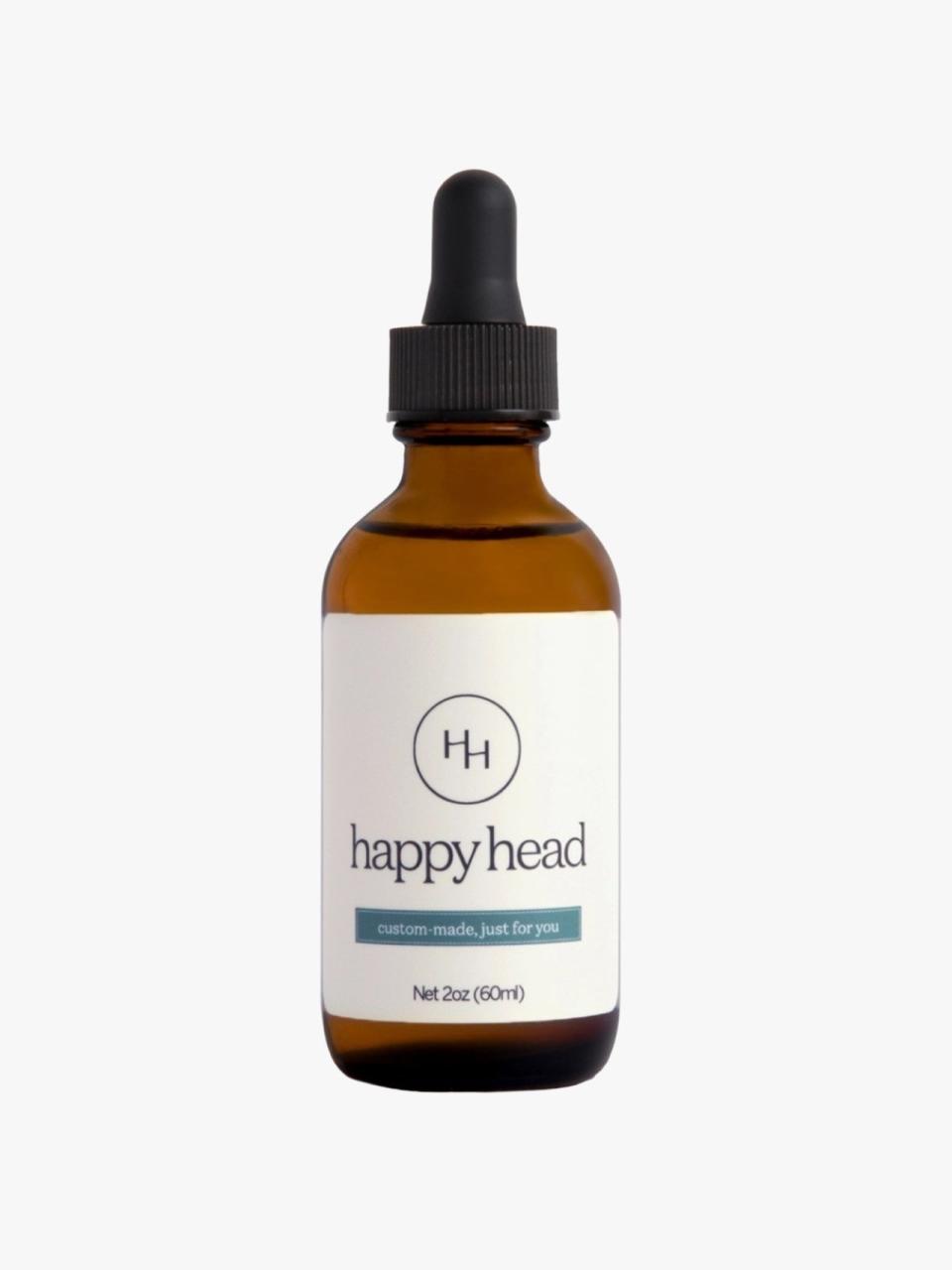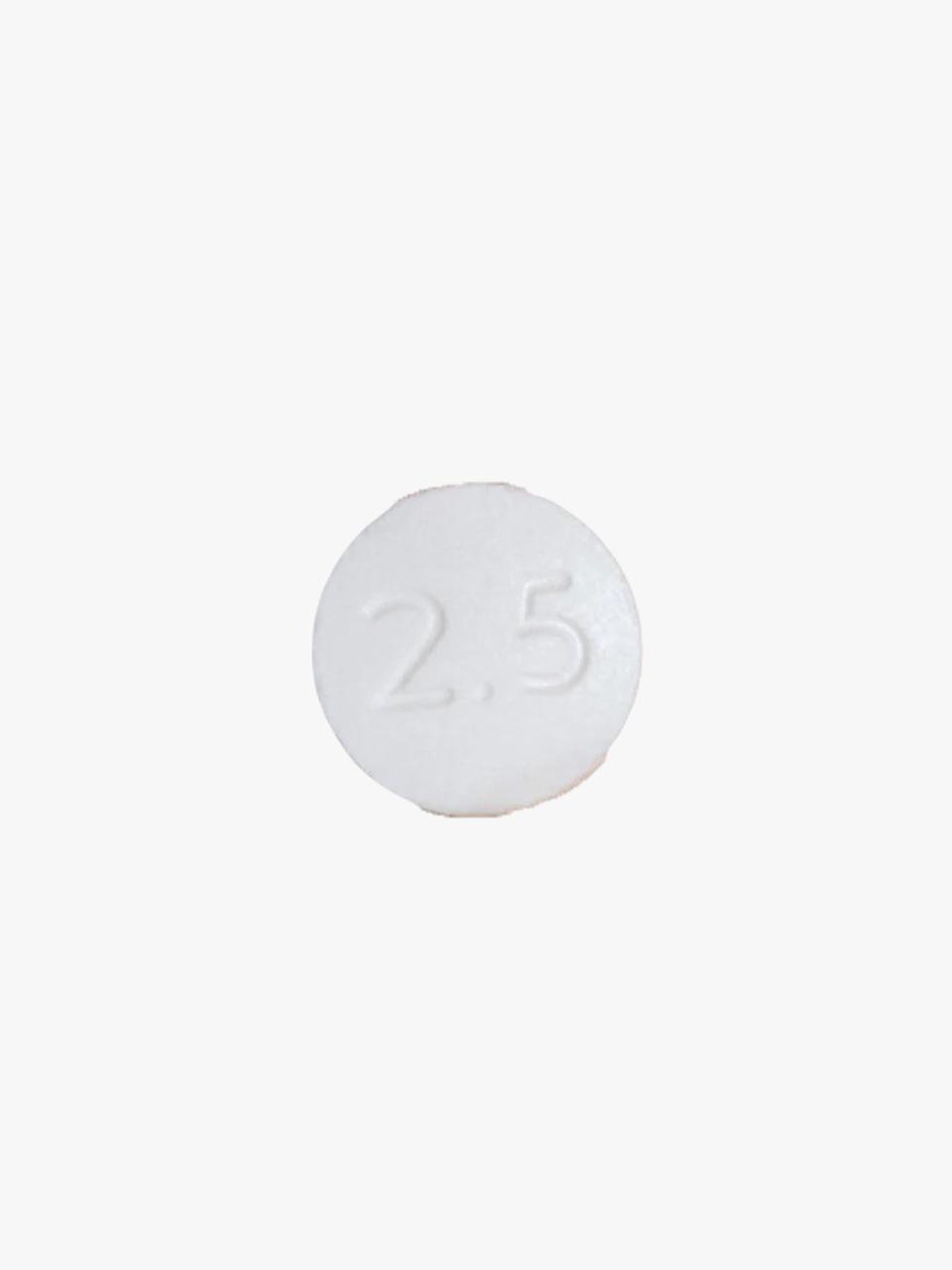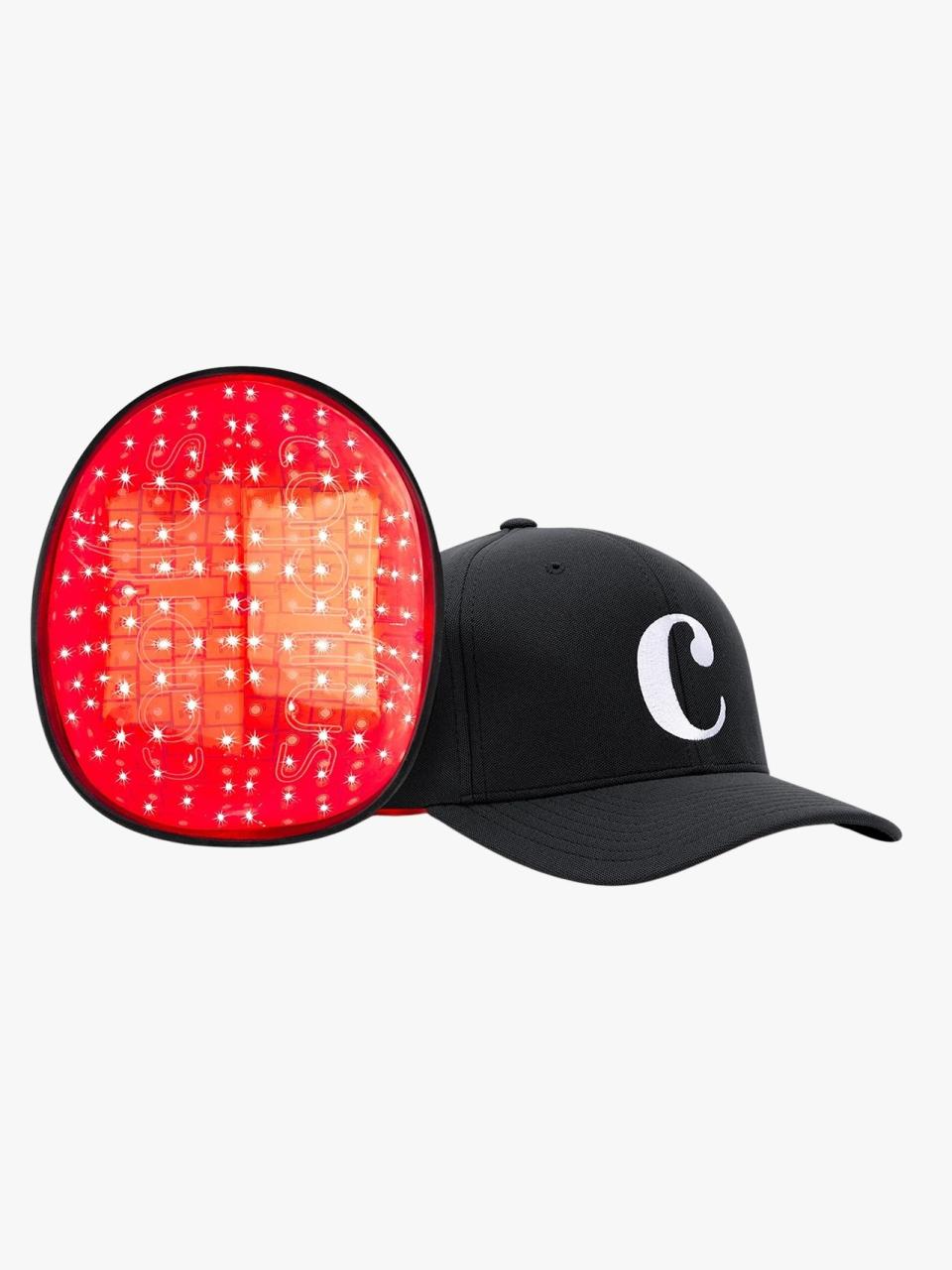Four Gold-Standard Solutions When You Begin To Bald

Photo Illustration by C.J. Robinson
In your lifetime, you will experience hair loss. It’s different for every guy; some of us are stark bald by 25, while others might have only experienced slight, gradual thinning throughout their lifetimes. (About 50% of men will experience it before age 50, though.) For anyone experiencing mild or severe thinning—and who wishes to reverse it as much as possible—it’s helpful to know which remedies can bring the density back.
Even for those guys who haven’t experienced noticeable hair loss, it’s never too soon to start on hair retention measures to lock in your hairline for the rest of your life. In fact, doing so before visible recession and thinning happen can net better results in the long run. Preventative measures look a lot like the ones used to revive recent hair loss, so read on for tips pertaining to both scenarios.
Here is everything you need to know about going bald, specifically from male androgenetic alopecia, more commonly known as “male-pattern hair loss.” While there are other types of alopecia in men, this one is the most common in men, and as such, we've provided tailored guidance here.
Why Hair Falls Out
The easiest explanation for androgenetic alopecia in men is simply: age and genetics. You could also flat-out blame hormones since a certain androgen in your system gradually shrinks your hair follicles, resulting in balding. That culprit is called “dihydrotestosterone” or “DHT."
When DHT strikes the follicles, it causes “miniaturization”, and over time the follicles produce fewer and thinner hairs until they’re altogether incapable of growing any. This will only happen at the temples and top of your hair; anything around the backs and sides of the head is genetically immune to this androgenetic loss—which is also why these hairs are used in hair transplants (once implanted, they won't fall out again) and why bald guys are never fully bald unless they shave off the donut.
This type of loss is experienced in different ways, sometimes together at once. These include recession of the hairline, uniform thinning around the crown, and concentrated thinning atop the crown (those last two are often grouped together). Recession and thinning often require different treatment strategies, so it’s important to understand which type of loss you are experiencing. From a preventative standpoint, the approach is generally uniform unless you know with certainty which type of loss you want to prevent.
Early Prevention and Quick Intervention Are Key
If you get ahead of hair loss in the first place—and if you stick with prevention methods—there’s a good chance you won’t notice any changes for decades or more, even. But if you notice a recession or thinning, then it’s important to get started as soon as possible. That’s because you can only revive crown thinning that has been lost in the last couple of years.
“Hair Loss Shampoo” Can’t Save It
There are many hair care products out there marketing themselves as hair-loss shampoos but know that these are purely supplemental efforts. No shampoo or scalp scrub can make a dent in your hair retention because they don’t actually soak into the scalp. Even if you leave them on for a few minutes, they aren’t designed to actually bring hair back; instead, they promise things like boosted circulation, adding volume to your hair, and DHT interference. However, they can’t make good on their promises to fully revive your strands so they don’t compete with the actual clinically-backed efforts.
Hair supplements—with ingredients like saw palmetto, pumpkin seed oil, and ashwagandha—can certainly move the needle (especially the top-shelf ones like Nutrafol). But consider them as an extra line of defense to the regimen I'll lay out below.
4 “Gold Standard” Solutions for Hair Retention
Right now, these are considered the four best options for hair retention. Speak with your board-certified dermatologist to discuss the best option for you, as well as the costs, risks, and expectations associated with each.
1. Topical Solutions
Topical medicines can target the scalp and follicles with their ingredients without absorbing into the entire body. The most common topical treatment is minoxidil (the generic for Rogaine), which has been available over the counter for a while. Men will use a 5% solution. Minoxidil significantly boosts circulation and nutrient delivery to the follicles and is used to target crown thinning.
Topical finasteride is becoming increasingly popular, too. It inhibits DHT’s impact on the follicles to prevent recession and general thinning; however, it is fairly expensive since it is newly available. Often, it is sold by prescription as a compound solution (often with minoxidil).

Topical Minoxidil
$11.00, Keeps

Topical Finasteride Gel
$99.00, XYON

Topical Finasteride + Minoxidil Compound
$79.00, Happy Head
2. Oral Medicines
There is an increasingly popular oral minoxidil option (the generic for Loniten), which is only prescribed off-label by doctors. Loniten is a blood pressure medicine that decreases and relaxes the muscles of blood vessels, but when used cosmetically in small doses, it is among the most effective options for hair retention because it helps with blood flow. However, know that it might cause hair growth all around the body since its vasodilating effects will reach every follicle on your body.
Then there’s the oral version of finasteride (the generic of Propecia). It was originally a medicine for enlarged prostates, but when taken in smaller cosmetic doses, it effectively inhibits DHT’s conversion inside the body and is more or less one of the best ways to counter thinning and recession simultaneously. However, its use must be carefully monitored by a doctor due to the potential sexual side effects that include potential erectile dysfunction or lowered libido. Usually, these side effects can be reversed once the medicine is stopped, but at that point, DHT proliferation will resume.

Oral Minoxidil
$30.00, Ro

Oral Finasteride
$29.00, Hims
3. Plasma Injections
There are growth factors in your blood’s plasma, and you can isolate the plasma at a dermatology clinic and then inject that plasma into your scalp. Once there, the growth factors soak into the follicles and give everything a swift kick, stimulating all kinds of rejuvenated growth. This is called PRP (from Platelet-Rich Plasma). It can be expensive to maintain, especially in big cities, where sessions can cost $1K or more and usually begin with three sessions in the first few months. Still, it’s a terrific way to boost other efforts, should you ever want to treat yourself.
4. Low-Level Laser Therapy or “LLLT”
Here’s another option that adds up if you get fully invested. LLLT sends lasers into your scalp and follicles, stimulating their growth and overall strength/vitality. It is available in most dermatology clinics, but we’d also advise investing in an at-home helmet, as silly as most look. You can get the same benefits as in the clinic on a much more regular basis; even if they’re less intense than a clinical session, the repeated use will make up the difference. Plus, the savings start practically as soon as you use it.

Laser Hair Growth Cap
$670.00, Amazon

Medical LLLT Hair Growth Cap
$5200.00, Bauman Medical
Hair Transplants Look Great Now—But As a Last Resort
It’s true: Hair transplants look great now (even when you save thousands of bucks for a little cosmetic tourism). But don’t resort to a hair transplant unless you are already using some of the above methods as a pre-existing means of retention. Because even after you get a transplant, you’re going to need to keep up those hair-retention measures in order to prevent further thinning.
But it’s not the transplanted hair you have to worry about; it’s all the stuff that resided there prior to the transplant. Remember, only the hair native to the crown is susceptible to androgenetic loss, so anything transplanted from the backs and sides (or even the beard) is fixed in place forever. Imagine what you might look like, then, if you transplant an entirely new hairline and temples but cease maintaining the minoxidil or finasteride.
On top of that, it’d be silly to get a hair transplant if you aren’t already doing as much as possible to revive your current hair density. So, once you’ve been doing some of the above “gold standards” (minoxidil, at a minimum) for about two years, then consider a hair transplant. That way, you’re working with your maximum potential rather than transplanting more hairs than necessary. Keep up the habit after the transplant, and you might have the same hair density for the next 30 years—that is, until stem cell transplants finally catch wind or until they cure hair loss altogether.
Hair Retention Is a Lifelong Game
At this point, it’s no surprise that you need to keep up this hair retention process indefinitely. Any efforts will quickly be undone by Mother Nature and Father Time. So, either commit to it all or get out. Sure, you can dip your toes in for a year or more and see if it’s something you’re willing to do forever.
At least the bare minimum should be considered: Daily topical minoxidil of 5%, especially since brands like Kirkland sell it for under $10 per monthly bottle. (It tends to be less disruptive to your hair styling regimen if you apply it before bed, then rinse or wash your hair and scalp in the morning.)
Baldness Has Benefits
Oh, to be so confident and content with nature’s course. We both admire and envy the guys who can embrace baldness. Maybe they have better-shaped heads than the rest of us. None of the above is meant to suggest that going bald is a bad thing; the rest of us just personally wish we could all opt into baldness rather than be forced into it. If you do choose this path, then be sure to read up on the ways to care for a shaved head, how to shave your head, the best razors for that task, and the best bald head SPF.
Originally Appeared on GQ

